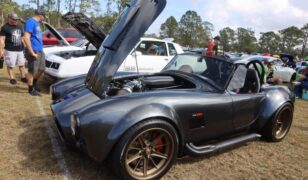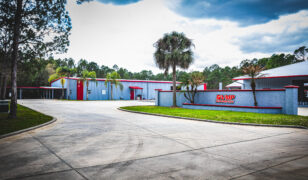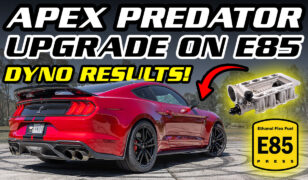By Evan J. Smith
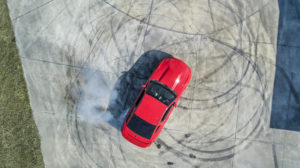 In the modern era of high performance, custom tuning is essential. While Mustangs and F-Series trucks make better power than ever before from the factory, there’s always room for improvement. Adding a custom tune from VMP Performance is one way to ensure you’re getting maximum power.
In the modern era of high performance, custom tuning is essential. While Mustangs and F-Series trucks make better power than ever before from the factory, there’s always room for improvement. Adding a custom tune from VMP Performance is one way to ensure you’re getting maximum power.
Your factory tune is designed to meet the demands of a wide range of driving styles. This includes the casual driver who never goes past quarter-throttle, to the weekend drag racer, to the commuter looking for the best mileage. In each case, the demand on the engine is different and the manufacturer has to provide a balance for all these conditions. Custom tuning lets you dial in your engine for your driving style.
Turning it Up!
It’s also important to know that virtually all aftermarket parts require some form of custom tuning. Components like cold-air intakes, larger throttle bodies, headers, and of course superchargers and turbos increase the airflow of the engine, and therefore, necessitate tuning. Therefore, it’s necessary to adjust the parameters in the ECU to maintain proper air/fuel ratio, and drivability.
These are just a few things VMP Performance calibrators consider when designing a custom tune. VMP builds custom tunes whether you’re looking for an additional 30 horsepower or 1,000 plus ponies.
Data Driven
“We look at everything that is affected and we tune the parameters accordingly,” said VMP Performance President, Justin Starkey. “Ultimately, the customer gets a performance feel, with improved throttle response, more power, and crisper shifting. You feel it everywhere,” he said. “Some people get hung up on peak power, but the area under the curve is so important for driveability and good average power.”
“We optimize performance by dialing in the spark curve, cam timing, and fuel mapping. We also modify torque reduction. This is a factory parameter which cuts power on both auto and manual shifts,” he added. With an older mechanical throttle linkage, a direct application of throttle equals a direct amount of throttle opening. With drive-by-wire, this is not always the case. In other words, you may have your right foot on the floor, but notice a lag in the throttle response. This is a result of torque reduction and torque truncation. A VMP custom tune can remedy this, providing snappier throttle response and full power on demand. “For instance, if you shift really fast the computer can actually reduce the power for a moment. It can do so by closing the throttle or pulling timing. Torque reduction is used to reduce the load on the clutch, transmission, or rear end, but it also slows your elapsed time,” Justin added.
VMP’s calibration experts will work hard to ensure your custom tune provides the best results for your specific application. “In building a tune, we don’t just control how much power gets delivered, we control how power is created,” said Justin. “Dialing in the timing, fuel, and eliminating torque reduction makes the car feel so much better. So we spend a fair amount of time getting that right. The factory tries to make the car smoother; in return, you don’t always get the best throttle response. We can fix that,” he said with a smile.
Ask anyone who has driven a poorly tuned car or truck and they’ll tell you no amount of horsepower can make up for a choppy idle, stumble off the line, or a misfire. With that, our main objective is to ensure you enjoy your horsepower, along with excellent drivability and reliability. A VMP Performance tune will help unleash everything your combination is capable of producing. Even the most heavily modified vehicle can be tuned to fire up immediately, idle smoothly, and provide years of enjoyment on the street and track.
Dialing in Tunes for Aftermarket Parts
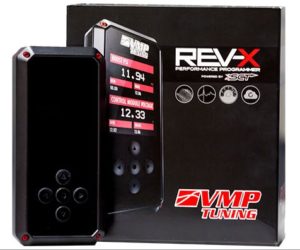 As mentioned above, anyone with aftermarket engine parts, including something as simple as a cold-air intake, should consider a custom tune. “Basically, appreciable gains with a cold-air kit require a larger mass air section,” Justin explained. “So once you do that, you have to tune the computer to deal with the extra airflow. We’re remapping the mass air transfer function so the computer knows how much air is getting to the engine. The car can’t properly compensate on its own, and that’s where the science and art come in to play. And that’s where a custom tune really maximizes performance,” Justin explained. He also added that exhaust modifications such as mufflers don’t necessarily require tuning, but adding long-tube headers will require minor tuning.
As mentioned above, anyone with aftermarket engine parts, including something as simple as a cold-air intake, should consider a custom tune. “Basically, appreciable gains with a cold-air kit require a larger mass air section,” Justin explained. “So once you do that, you have to tune the computer to deal with the extra airflow. We’re remapping the mass air transfer function so the computer knows how much air is getting to the engine. The car can’t properly compensate on its own, and that’s where the science and art come in to play. And that’s where a custom tune really maximizes performance,” Justin explained. He also added that exhaust modifications such as mufflers don’t necessarily require tuning, but adding long-tube headers will require minor tuning.
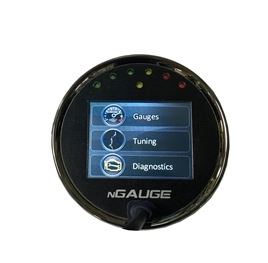 VMP Performance offers SCT and HP Tuners software and hardware. And VMP offers a few levels of tuning, from basic plug-and-play tunes to full custom tunes. Tuning can be done at the shop in New Smyrna Beach, Florida, or remotely using the Internet.
VMP Performance offers SCT and HP Tuners software and hardware. And VMP offers a few levels of tuning, from basic plug-and-play tunes to full custom tunes. Tuning can be done at the shop in New Smyrna Beach, Florida, or remotely using the Internet.
“We send custom tunes all over the world using SCT and HP Tuners,” said Justin. “Once a system is purchased, we mail you a device with a tune loaded. You plug it into the vehicle and download the tune. Next, you’ll run the car at the track or on the dyno. The device (SCT or HP Tuners) logs data which includes air-fuel ratio, ignition timing, knock sensor retard, fuel trim, cam timing, throttle position, and throttle pedal position. We look at the data and fine-tune each parameter to get maximum power and drivability. Using the Internet we can custom tune from any location; we don’t have to have the vehicle in person,” he added.
One of the most common mods amongst Mustang owners is a cold-air kit and tune. “We typically see gains of 25-30 horsepower on a 2015-17 Mustang with these mods,” he stated. “Plus you get all the improvements in feel and drivability. Gains with our Gen2R and Gen3 VMP superchargers can be as much as 200-300 horsepower on a 5.0 L Coyote. We’ve gone well past 1,000 rear wheel horsepower on some applications.”
“Of course, a more heavily modified vehicle requires more data logging. Data logging also allows us to evaluate the running condition of the engine. It lets us know if the parts are working properly. This is helpful when diagnosing a problem. Basically, we can tune any car as long as the car is in good mechanical condition.”
Trouble Shooting
“Mail-order tuning has its challenges, but we have decades of experience. Problems arise in the tuning process when a vehicle is not running 100 percent.” To prevent potential issues, Justin offers a few basic tips. “Always use the best fuel possible. If you have a supercharged car, the plugs and gap are important. Old or incorrectly gapped plugs can cause a misfire that can’t be fixed with a tune. And always have at least a quarter to a half tank of fuel, whether racing or dyno testing. Another item to check on boosted vehicles is the intercooler pump. They frequently fail on older vehicles (and sometimes new ones), which causes a problem when tuning. A failed pump can lead to an elevated inlet temperature, which can be catastrophic.
After verifying your vehicle is in good working order, VMP calibrators will tune it to the maximum potential. This may take a few dyno pulls or runs at the track, other times it takes a bit longer. But with VMP’s experience in remote tuning, you’re guaranteed impressive results.
For more information on tuning, be sure to tune into Tuning Tuesday every Tuesday at 1:30 p.m. (EST) on Facebook and YouTube Live.
Tags:
automobilecalibratorcarCold Air Intakecommutercoyote enginecustom tuningdatadata drivendata logdata loggingdrag racedrag racerecoEngineF-150factory tunefordford mustangheadershp tunersjustin starkeymustangperformancerace carsctSuperchargersthrottleThrottle BodyTransmissionTUneTunertuningturbosTVSvmpVMP Custom CalibrationVMP custom tunevmp performancevmp tuning



